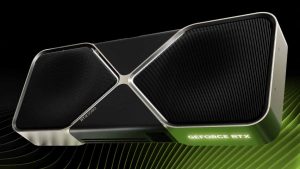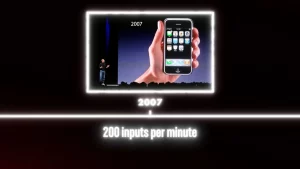It’s difficult to get excited about slightly older external SSDs, but sometimes they can surprise you—the Crucial X9, for instance, certainly surprised me with its consistent performance and low price tag. Unfortunately, the SE880 is not such a pleasant surprise. It’s fine for what it is, but “fine” is all, and there are better options out there.
The SE880 suffers primarily because of the existence of newer drives such as its ostensible successor, the Adata SD810, which does everything just that bit better and has a little more to offer, for only a smidge of extra cash. That’s why the SD810 is the best external SSD for gaming at the time of writing, and it’s why the SE880 probably isn’t worth picking up while the SD810 is available at a similar price.
It’s not all negative, though. The SE880 does have something to offer, even if it’s pipped on the performance and value front by newer eSSDs. The main plus to this dinky little drive is its minuscule size. It’s actually smaller than the tiny TeamGroup PD20, which I rate highly for its portability, though it doesn’t look quite as suave, nor does it have the PD20’s keychain hook.
If you’re just looking for something small, though, the SE880 will serve you well. First impressions upon unboxing had me impressed by its diminutive 64.8 x 35 x 12.25 mm shell, and its brushed metal casing is rather pleasant to behold—and to hold, come to think of it.
However, its plastic ends and light weight don’t give me tons of confidence in its durability, unlike more premium drives such as the Samsung T9, which feel like you could pitch them at a particularly solid surface without a worry in the world (don’t actually do that). Plus, the SE880 lacks the dust protection of other drives such as the SD810, which has a cap to cover the USB-C port that gives it an IP68 rating.
And make no mistake, the main problem with this drive is the Adata SD810. Sure, being smaller and more portable is nothing to turn your nose up at, but for one, it’s not that much smaller than the SD810—if one will fit in your pocket then so should the other. But second, and most importantly, size isn’t everything when it comes to portability. There’s also attachability and durability to consider, and there are better options than the SE880 on these fronts.
Those two things, in addition to looking lovely, are what make the PD20 such a great portable drive: it has a hoop that you can use for a keychain and it has a dust plug for the USB-C port that gives it its official IP54 rating. If I had to choose between a slightly smaller drive lacking solid dust and drop protection and a slightly bigger one with said protection, I’d choose the latter every time.
That’s far more important for portability than an extra few millimetres in length because taking your drive everywhere means putting it at more risk of damage, and a dead drive is a dead drive, no matter how small.
(Image credit: Future)
(Image credit: Future)
(Image credit: Future)
(Image credit: Future)
None of this would be fatal for the SE880 if it was a great performer, but it’s not. It’s not bad, but again, other drives can do better for little extra cost. Ignoring the very inconsistent IOMeter performance the drive achieved over multiple different tests—a problem that a full, thorough format seemed to fix—I found the SE880 to offer decent transfer speeds close to its rated 2,000 MB/s, but only for about a minute. After this—after its pseudo-SLC cache ran out—it slowed down dramatically, sitting at about 70 MB/s for the rest of the 15-minute IOMeter run.
Compare this to the SD810, which not only maintained its similar peak for about two and a half minutes—over twice as long as the SE880—but dropped down to about 150 MB/s after that. 150 MB/s isn’t a lot, of course, but it’s double the SE880’s 70. That’s a performance difference well worth the slight price increase.
Even the PD20 is a better contender for sequential writes, in my opinion. Yes, peak speeds are only maintained for about 30 seconds, but that’ll get you about 50 GB of data transferred, which is more than most people will need. If you need a lot more transferring at peak speeds, the SD810 is there for you, leaving the SE880 in a bad spot between these two drives which both have the additional durability/portability/aesthetic benefits.
So much for sequential, but what about random reads and gaming performance? The SE880, for sure, is far from an awful choice of game library drive. But again, it’s not quite as good as other options such as the SD810 or Samsung T9. Yes, it performed as well as (if not better than) the SD810 in my FFXIV testing, but in 3DMark Storage it fell consistently and decidedly behind the SD810 and T9. It stayed in line with the PD20, though, which makes sense given both are mini drives.
And to be fair, all of these drives should be serviceable as a portable game library. I tried the SE880 out with my beloved Crab Champions game install, moving the Steam files over to the drive with the Steam helper and then loading up the game and playing a couple of levels.
✅ You want USB 3.2 Gen 2×2 speeds for cheap: This drive delivers peak speeds well above 1,500 MB/s for up to about a minute, and it costs less than many other drives that do so.
❌ You want the best performance for your money: You might save a few dollars by opting for the SE880, but if you spend that little bit extra you can get a more durable and consistently performant drive.
The 1.7 GB transfer was quick, though not instantaneous like some other drives (the Crucial X9 in particular worked a charm), and when in-game, levels loaded instantly and there was no stuttering.
So yes, it works perfectly well as a game drive, but the point is, there are other, better options even for RND4k read and gaming performance, whether that’s the super-chunky, actively powered and ultra-reliable SanDisk Desk Drive or, as ever, the SD810.
Don’t get me wrong, a minute of peak speeds over a USB 3.2 Gen 2×2 connection, plus decent game storage performance, is plenty. It’s just there are now better options on the market, whether that’s in terms of performance, durability, or portable aesthetics. And some of those barely cost any extra, which truly makes the SE880 seem a little antiquated.
I suppose if you want USB 3.2 20 Gbps speeds for as cheap as possible, the SE880 isn’t a bad choice. But if you’re willing to spend even a little extra, the SE880 fast loses its appeal.












